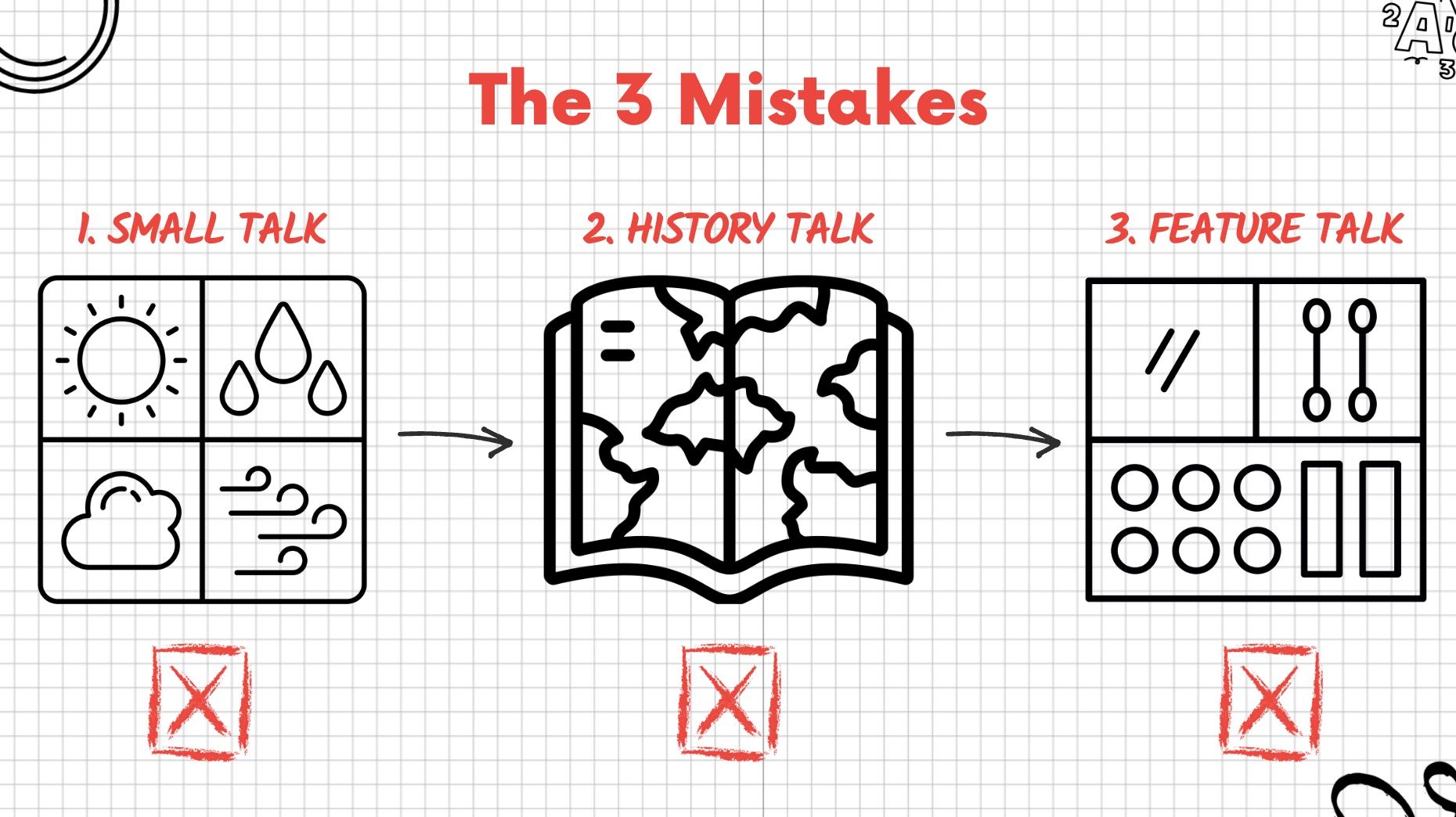Reminder: The b2b presentation is your first service to the client, a strategic act designed to deliver maximum value, build trust, and drive the conversation forward.
What a B2B Sales Presentation is NOT

Write your awesome label here.
Master Digital Presentations
Tomas' Tips for the First 15 Minutes

CASE STUDY:
Master Digital B2B Presentations
Tomas has mastered the B2B sales process over and over again. In this course, he breaks down the exact steps to bring the A GAME to your b2b sales presentations.
Duration
40 mins
Lessons
14 lessons
Access
Online Self-paced
Level
Advanced
The Right Presentation for a Sales Role
How our Academy Helps?
If you're in the B2B corporate sales domain, then you're in good hands. Our academy provides you access to 400+ videos covering the entire B2B sales cycle so you could succeed at your job. In fact, the author of the courses Tomas Chatila has personally used the exact material to succeed in his sales role at various top scale companies.
3,000+ professionals trust Desatmos to train and enhance their B2B sales skills.
Write your awesome label here.
FAQ
Never miss the news
Stay updated | Stay current | Stay connected
Thank you!

